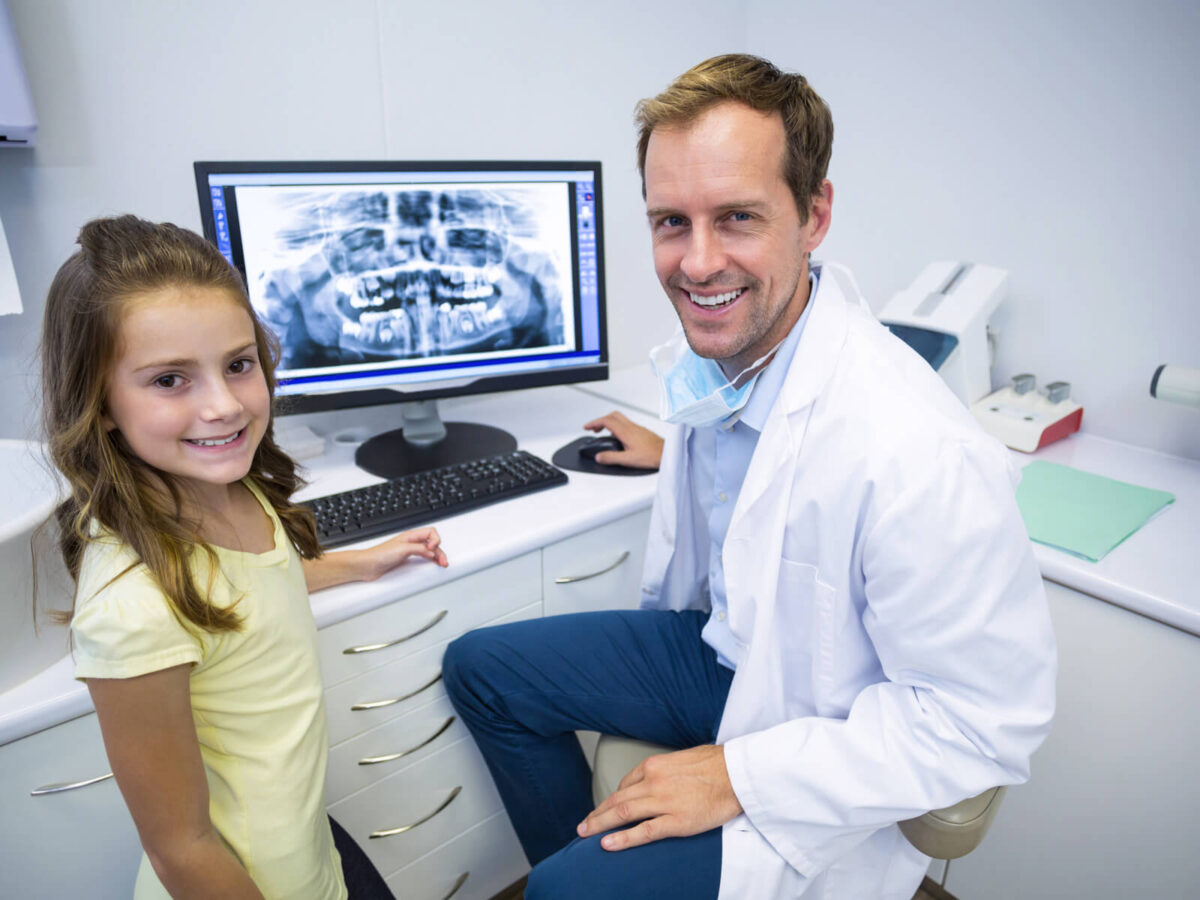Blog
Dental hygiene tips for healthy teeth & gums

Dental X-rays For Children: Safety And Necessity
Dental X-rays are crucial when diagnosing tooth problems because they can reveal hidden disorders that may have gone undetected during a visual inspection. However, parents frequently refuse to subject their children to pediatric dental X-rays because of radiation safety concerns.
This article will discuss the benefits and drawbacks of using dental X-rays on children, spotlighting the diagnostic value of these images and addressing typical parental concerns.
Dental X-rays and Their Importance in Child Dentistry:
Pediatric dental X-rays, also called radiographs, offer a thorough image of the teeth, bones, and surrounding tissues, allowing dentists to spot problems that might otherwise go undetected. X-rays have multiple vital uses in pediatric dentistry, including:
- Cavities, developmental anomalies, and impacted teeth are just a few of the dental issues that can be detected and treated early on with the help of X-rays.
- Pediatric dental X-rays allow dentists to monitor the growth and development of a child’s teeth and jaw, allowing them to foresee and treat any problems.
- To decide the best course of action for correcting misalignments and other difficulties, orthodontists rely heavily on X-rays taken throughout the planning process.
- In a dental emergency, X-rays are used to determine the total damage amount and the best course of therapy.
Exposure to Radiation and Health Risks:
Radiation exposure from pediatric dental X-rays is a significant cause for concern among parents. It is crucial to note, however, that today’s dental X-ray machines are built to reduce patients’ exposure to radiation and that pediatric dentists take additional measures to protect their young patients:
- Digital radiography, increasingly employed in dental offices, produces much lower radiation exposures than film-based X-rays. Because of this, there is minimal risk of adverse effects.
- Children who need dental X-rays are often given lead aprons and thyroid collars to wear throughout the procedure. Dentists, concerned about patient safety, also employ the most petite X-ray film sizes available.
- Dental professionals ensure that X-rays are only taken on pediatric patients when essential for diagnosis and treatment planning by adhering to established recommendations for the frequency of X-rays.
- Dentists assess the benefits of a precise diagnosis and efficient treatment against the risks of radiation exposure. X-rays are recommended depending on the child’s specific oral health requirements.
Varieties of Pediatric Dental Radiographs:
Dental X-rays used in pediatric dentistry can be divided into numerous categories.
- X-rays, called “bitewings,” take pictures of the upper and lower back teeth and are typically used to spot cavities and check tooth spacing.
- Dental problems, such as root infections and structural anomalies, can be detected by periapical X-rays, which display the complete tooth, crown to base.
- Panoramic X-rays are helpful for orthodontic planning and evaluating oral structures since they show the entire mouth at once.
- Occlusal X-rays are taken from the bottom or top of the mouth and show how the bite and teeth are shaping up.
Why X-Rays Are Essential in Dentistry:
Pediatric dental X-ray safety is a serious issue, but parents must know why they’re used in pediatric dental care. Since many oral abnormalities in children can be asymptomatic or concealed below the surface, X-rays are valuable tools for discovering and treating dental problems in children.
The benefits of early detection and treatment outweigh the small amount of radiation exposure via pediatric dental X-rays.
Conclusion
In pediatric dentistry, dental X-rays for children are both ordinary and necessary. The safety of young patients is ensured by minimal radiation doses, protective measures, and thoughtful assessment of when and why X-rays are done.
These diagnostics are essential for establishing a diagnosis, mapping out a course of therapy, and keeping tabs on a child’s oral health as they grow. When deciding whether or not to include dental X-rays in your child’s treatment plan, it is crucial to rely on the judgment of qualified dental professionals who put
